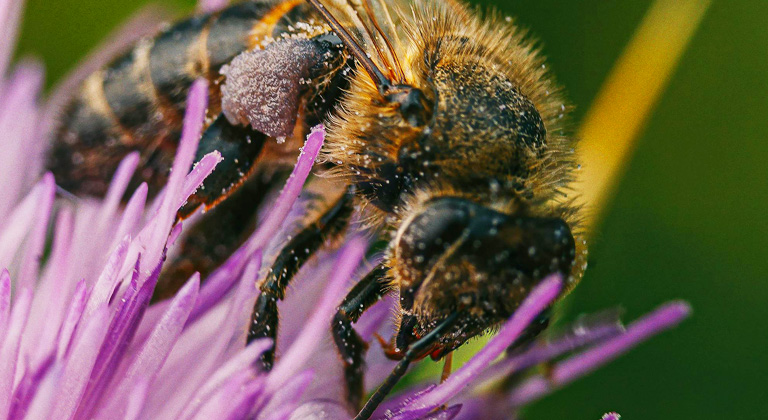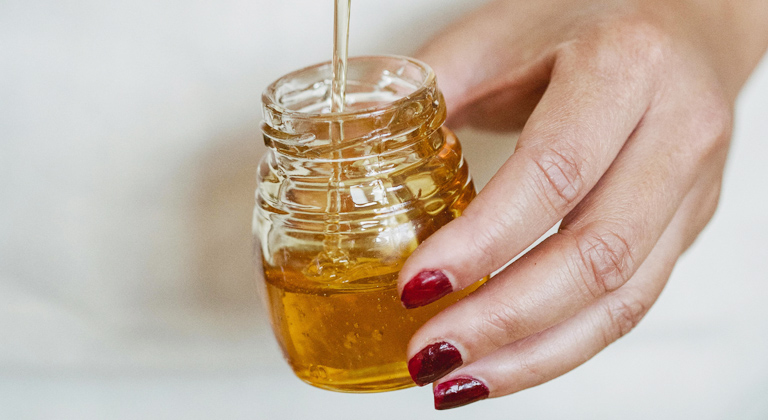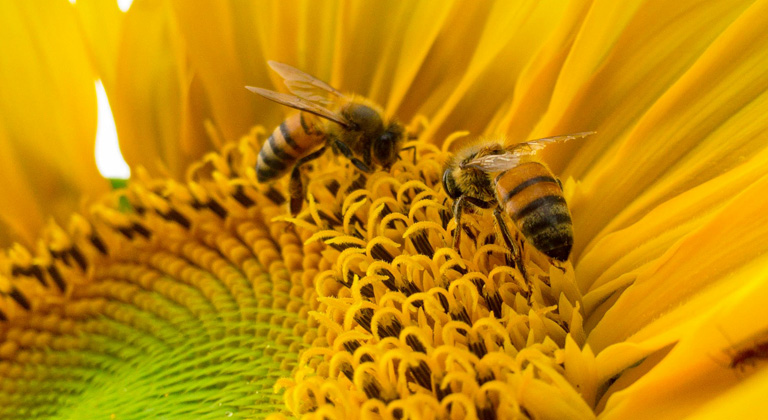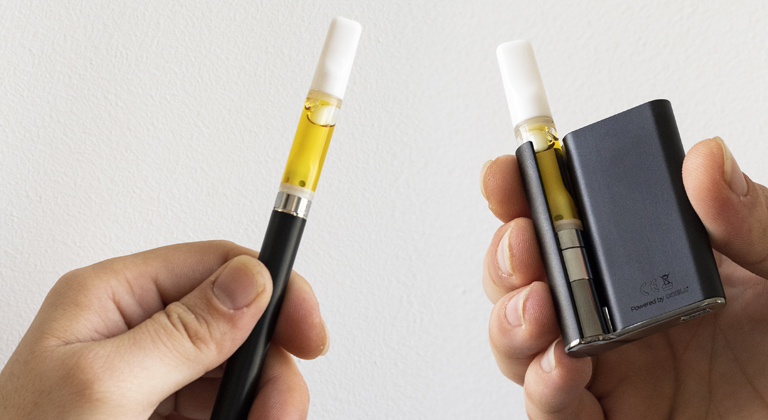Nature constantly amazes us with its subtle yet ingenious way of creating synergies. Take for instance, the synergy that occurs when bees turn flower nectar into honey and, collaterally, carry plant terpenes, unintentionally incorporating them into the process, giving this superfood unique properties and aromas.
The natural process: bees and terpene collection
In their relentless pursuit of nectar and pollen, bees flit from flower to flower trying to gather these substances. It’s during this interaction between these industrious insects and flowers that the fortuitous “accident” happens. The bees drag terpenes with their legs and bodies, collecting them unintentionally and making them part of the honey when they process the nectar in the hive.
A miracle of nature includes these aromatic compounds in the final product, and it is utterly fascinating in how it impacts the composition, taste, and properties of the honey.
How do bees collect terpenes?
A bee’s life is an endless chain of tasks, with one leading to the next. Only adult bees in their final stage of life are chosen to undertake the most dangerous task of all: the collection of pollen and nectar. Let’s explore the process of making honey:
- Interaction with flowers: Bees, in pursuit of food, depend on nectar and pollen. When foraging bees visit flowers, they suck the nectar and store it in a specialised organ known as their “honey stomach,” essential for carrying this precious substance. While on the job, they also accumulate pollen from the flowers, thereby inadvertently facilitating the reproduction of many plant species, as they pollinate other plants on their relentless route.
- Adhesion of terpenes: These aromatic compounds are volatile and lipid-soluble, so they can easily stick to a bee’s exoskeleton, which is covered with a thin layer of wax. Depending on the type of plant (rosemary, orange blossom, etc.), different terpenes will adhere.
- Transfer of terpenes to honey: Once the bees arrive at the hive loaded with nectar for honey production, the terpenes stuck to their exoskeletons are transferred during the process. Honey production occurs when the nectar is “transferred” from the adult worker bees (collectors) to the younger bees, who regurgitate this substance for about half an hour. Through this process, the young bees modify the pH of the nectar by combining it with enzymes they possess. After several digestions, they break it down into simpler substances, mainly fructose and glucose, as well as reducing its moisture levels. In this way, the nectar finally becomes honey.
The resulting honey varies significantly in terms of its aroma, colour, and taste, depending on the flowers from which the nectar has been extracted, that is, depending on the terpenes present in each plant. This is why we classify honey into several types, which can be multifloral (made from different plant species) or monofloral (when the nectar is extracted from the same type of flower). So now you know why there’s a wide variety of products on the market, such as rosemary honey, thyme honey, eucalyptus honey, etc.
Monofloral honeys contain the terpene profile of a particular plant; for example, lavender honey is rich in Linalool, one of its main terpenes; while orange blossom honey is rich in Limonene and Myrcene.

What effects do terpenes have on honey?
The terpenes contained in honey give it its complex aroma and taste that many of us adore. However, these compounds not only enhance the taste experience but also provide functional benefits. Science has discovered that terpenes possess various properties including anti-inflammatory, antioxidant, and antimicrobial effects, among others.
Therefore, honey – into which bees unintentionally added the terpenes – retains a small proportion of these functional benefits. In the case of lavender honey which, as we mentioned earlier, is rich in Linalool, this terpene provides sedative, calming, analgesic, anti-inflammatory, and antibacterial properties.
In contrast, for orange blossom honey, the Limonene terpene offers energising, antifungal and anti-inflammatory benefits; while Myrcene delivers relaxing, analgesic, and anti-inflammatory effects.
Innovation and nature: adding terpenes to honey
As we just explained, terpenes are a part of the natural honey-making process. However, folks in the apiary business can control the environment in which bees collect nectar, to promote collection from a specific flower. This factor is decisive for the intensity, taste and properties of each type of honey.
At Cali terpenes, we believe that innovation and respect for nature are compatible. Our mission is to restore nature’s power.
That’s why we asked ourselves, what if we were to apply cannabis terpene profiles to already produced honey, contributing not only an aroma and taste but also its functional benefits. The end result couldn’t have been better, as we found that cannabis terpenes are the perfect complement to honey’s sweetness.
Cannabis is the plant with the greatest diversity of terpenes in the plant kingdom, which is why it has such a complex aroma and taste, filled with nuances.
Adding terpenes to honey after it has been produced allows us to achieve not only unique aromas but also specific properties with a level of precision never seen before. What’s more, botanical cannabis terpene profiles are extracted directly from fruits and vegetables, which are the same molecules that the bees collect.
Imagine a bee colony located in an outdoor cannabis crop, where the worker bees could meticulously collect terpenes from iconic strains such as Girl Scout Cookies or Gelato. We wanted to save nature from such arduous work by extracting these terpene profiles ourselves, with the aim of making them available to curious beekeepers who want to take their craft to the next level.
This process enables the creation of custom honey products with added benefits. This intriguing fusion intertwines biology, chemistry, and beekeeping, to shed light on an innovative product that maximises the functional properties of honey.
This contribution not only enriches the nutritional and gastronomic value of honey but builds a connection between nature and technological innovation in food production.

What benefits does the addition of cannabis terpenes to honey deliver?
Adding cannabis terpene profiles to honey replicates the natural processes that take place in nature, permitting the customisation of taste profiles as well as enhancing the desired functional properties. This innovative fusion brings a new dimension to this superfood:
- Honey enriched with cannabis terpene profiles doesn’t have to taste like cannabis. It depends on the applied dose, as well as the terpenes that the bees initially contributed to the honey. These parameters play an essential role in the final outcome. Achieving flavours with intriguing nuances that challenge the taste buds is a core challenge for culinary professionals, and honey with terpenes becomes a powerful secret weapon when designing unique dishes.
- The immense variety of cannabis strains, with their distinct aromatic profiles, allows for playing with different types of honey to find the perfect match.
- The cannabis terpene profiles add a plus of distinction and functional benefits to a food that inherently contains significant beneficial properties for health. Therefore, its power goes beyond cuisine; it can also be useful for therapeutic applications.
The complex structure of a beehive is a testament to nature’s ingenuity. The incorporation of terpenes into honey is an example of how innovation can follow the steps of natural processes to create and improve fantastic products. Only by understanding and appreciating this secret code can we enjoy foods with a rich backstory, complex flavours, and enhanced benefits.









